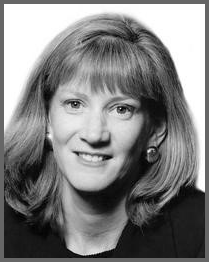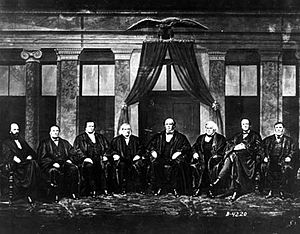From Paddi's Desk
by Paddi LeShane

This week, I kept hearing folks say the race for the governor's seat is a toss of the coin. It's about which candidate can mobilize their party, it's all up to the unaffiliated voters and it's about electability.
I knew what most of those "criteria" meant, but electability? Wouldn't it be fair to say that after two brutal primaries and a grueling petition process, all three candidates have electability? After all, the dictionary defines electability as the capability of having a reasonable chance of being elected. So yes, they all have a reasonable chance of being elected. But come November 6th, who is going to be elected? That's what everyone wants to know.
So I looked a little further to see if I could dig down and find the answer to who has the most "electability" between Ned Lamont, Oz Griebel and Bob Stefanowski, and I found some very interesting information.
Let's start with the candidate's first name. Robert is in the "Top 100 Most Popular Names" for boys, coming in at #68. According to the list I found, Oz and Ned aren't in the top 100 popular names at all. So, Stefanowski might have a little advantage there.
Then I looked at the "Top 100 Cities and Towns to live in Connecticut" - maybe that makes someone most electable. Simsbury - the former hometown of Griebel - comes in at #3, but his current hometown of Hartford doesn't make the top 100 list. Greenwich comes in at #13, home to Lamont, and Stefanowski's home in Madison is sitting at the #31 slot. So, does that give Griebel the edge, since he spent most of the adult life living in Simsbury?
In 2016, the Gallup Poll surveyed Americans to see if they would vote for a candidate from their own party if the person were well-qualified. Here are some of the results:
Female: 90% said yes. While it's not apples to apples, maybe Lamont gets a little juice since his Lt. Governor candidate is Susan Bysiewicz.
Religious beliefs: 32% said that it would matter to them, but nowhere could I find out what religion - if any - that each candidate identifies with. (Note: if they were atheists, 50% of Republicans said it would matter, compared with 38% of Democrats.)
A Socialist: 73% of Republicans said it definitely would matter, while 43% of Democrats said it would be a factor, although no one has declared themselves a socialist. However, Stefanowski is definitely implying that Lamont comes really close to the definition. Maybe Stefanowski can gain some advantage on this characteristic.
The Pew Research Group also has some interesting numbers from the 2016 presidential election. According to their research, President Trump won the majority of voters who describe their views as mixed (
fiscal moderate/conservative and socially aware). Um, that's a bit odd, considering most of Hillary Clinton's votes came from voters who identify as being
socially active/advocates and fiscally "moral." So who has the advantage here? Considering that Clinton won the state of Connecticut with a wide margin, maybe Lamont?
Finally, there is
age. This did matter to some folks' surveyed about electability, but that was back in 2014. The Pew Poll said that 36% of people surveyed were less likely to vote for a candidate in their 70's, but then again, President Trump won at the age of 70. Stefanowski might have the advantage here, since he's 56 while Lamont is 64 and Griebel is 69.
So considering all these characteristics of electability, CT still doesn't have a front runner. And if you take the average of the last three public gubernatorial polls, it shows the average percentage of voters as of September 17th who would vote for each candidate is as follows: 43% for Lamont, 37% for Stefanowski, 1% for Griebel and a huge 20% undecided with less than two months to go.
It seems like the most electable candidate for CT is the one who can capture the spirit of CT voters, demonstrate a vision for the state to move forward, and work across the aisle without party politics getting in the way. I guess we're lucky in that way; all three candidates aren't really "party people" when it comes down to it. Now they just have to lead with vision, passion and practicality.
|
|
 |
|
CT Agency Corner
State Treasurer Raises Attention to Legislative Bond Limit Amid Approvals for More Borrowing
by Mike Johnson
CT State Treasurer Denise Nappier only has about three months left in her term, but Nappier is attempting to set the record straight on the state's ability to continue bonding for projects.
In a statement last week, Nappier warned that the self-imposed legislative cap on bonding may have inadvertently been exceeded last June when the State Bond Commission agreed to borrow its normal rate to help fund previously approved capital investments on projects. The problem is that the new bond covenant laws were scheduled to go into effect July 1st, but the law erroneously made the changes effective immediately after the Governor signs the bill.
To further complicate things, last session the state legislature voted to approve a "bond-lock" that will significantly curtail the ability to borrow money for the general fund. The agreement that passed requires that the state promise to any borrowers that they will maintain a balanced budget while receiving capital funding.
What effect will this have on state bonding projects? Previously, approved levels of funding for multiple transportation projects have already been deauthorized due to inadequate levels of funding in the transportation infrastructure account and this could mean more extensive, scaled back bonding in the next administration.
|
|
|
The Campaign Trail
It's campaign season folks! Mark your calendars for upcoming debates to learn more about candidates running for office this fall.
WFSB will host a series of political debates in partnership with UConn moderated by Dennis House:
- U.S. Senate Debate on Sunday, Oct. 7, from 11 a.m. to noon at the WFSB Rocky Hill Studio.
In partnership with the Hartford Courant and WTNH News 7, the
Connecticut Conference of Municipalities will host the final gubernatorial debate of the 2018 election cycle at its annual conference in October.
- Gubernatorial Debate on Tuesday, October 30th from 7 p.m. to 8 p.m. at Foxwoods Resort Casino.
|
|
 |
|
Did You Know?
This Week in History
The First Supreme Court
September 24, 1789

This week 229 years ago, the Judiciary Act of 1789 was passed by Congress and signed by President
George Washington, establishing the
Supreme Court of the United States as a tribunal made up of six justices who were to serve on the court until death or retirement. That day, President Washington nominated
John Jay to preside as chief justice, and John Rutledge, William Cushing, John Blair, Robert Harrison, and James Wilson to be associate justices. On September 26, all six appointments were confirmed by the
U.S. Senate.
The U.S. Supreme Court was established by Article 3 of the U.S.
Constitution. The Constitution granted the Supreme Court ultimate jurisdiction over all laws, especially those in which their constitutionality was at issue. The high court was also designated to oversee cases concerning treaties of the United States, foreign diplomats, admiralty practice, and maritime jurisdiction. On February 1, 1790, the first session of the U.S. Supreme Court was held in
New York City's Royal Exchange Building.
The U.S. Supreme Court grew into the most important judicial body in the world in terms of its central place in the American political order. According to the Constitution, the size of the court is set by Congress, and the number of justices varied during the 19th century before stabilizing in 1869 at nine. In times of constitutional crisis, the nation's highest court has always played a definitive role in resolving, for better or worse, the great issues of the time.
|
|
|
|
|
The Real Scoop
Debates are an important part of each election cycle.
They provide an opportunity for voters to hear ideas from each candidate. Sometimes, they provide the only opportunities for voters to hear directly from candidates. But are these debates the best platforms for voters to "meet" the candidates?
|
|
|
Municipal
Roundup
by Ryan Bingham
In West Haven, the state Municipal Accountability Review Board (MARB) has been very involved in the city's recent finances.
Last week, the MARB voted to hold a meeting to discuss further controls over the city. These controls may include the power to pass and implement an interim budget, raise the city's tax rate, impose mid-year spending cuts as well as have greater latitude to approve or disapprove new labor contracts. Under MARB, this would be considered Tier 4.
The vote, which was 5-4 with one abstention, came after City of West Haven presented the latest draft of its proposed five-year plan, a requirement to receive certain state funds allocated within the enabling legislation.
The draft, which has not yet been approved, currently calls for the city to raise its real estate tax rate from 36.26 mills to 39.99 mills over the five years. Motor vehicle tax rates would remain at current rates.
The Mayor, Nancy Rossi, was not thrilled at these prospects. "It's disappointing, because I've really tried at all the meetings to take to heart all of what they have said," said Rossi after the meeting. "I'm just going to keep working to steer West Haven along the road to greater stability," she said. Right now, West Haven, which last year sold deficit bonds to finance $17.35 million of the city's accumulated deficit, projects a deficit of nearly $8 million in the 2017-18 fiscal year. Adding in approximately $1.4 million from the 2016-17 fiscal year, the total deficit would be about $9.3 million.
|
|
 |
|
2018 Election HQ
by Chelsea Neelon
In an election cycle as hyped up and important as this, candidates may have to find creative and divergent ways to reach voters.
Typically in high stakes elections, voters are targeted specifically and tactfully, especially because campaigns are running on limited dollars. This gubernatorial cycle, Lamont is self-funding, with Stefanowski opting out of public financing early on to self-fund but is now fundraising after the well ran dry. That being said, lots of dollars are up in the air to be used more freely, and Lamont is using that advantage to target unaffiliated voters, the largest electoral bloc in the state.
Unaffiliated voters make up 860,000 of the voting bloc in CT, a substantial number that could surely sway an election in CT. That being said, Lamont has engaged a targeted mail blitz on these voters twice this week. That is a large chunk of change, but any attempts to reach these voters may prove crucial. Stefanowski's campaign has been quoted to engage in a direct mail campaign to these voters as well.
Straying from the norm and using unconventional strategies in this unconventional election cycle may be the only way for candidates to truly differentiate themselves to voters. Stay tuned for some direct mail in a mailbox near you!
|
|
 |
|
Upcoming
Events
Senate Republican's Fundraiser
Monday, October 1st
4pm-6pm
Salute Restaurant, Hartford
CT Conservatives PAC
Tuesday, October 2nd
5:30pm-7:30pm
Gallucci's Restaurant, Danbury
"Women for Larson" John Larson Fundraiser
Thursday, October 11th
1090 Prospect Ave, Hartford
Contact Paddi for more information!
Senate Leadership PAC & Senate Majority PAC
Thursday, October 11th
4pm-6pm
Red Rock Tavern, Hartford
House Republicans Fundraiser
Tuesday, October 16th
6pm-8pm
Bad Son's Beer Company, Derby CT
|
|
|
 |
|